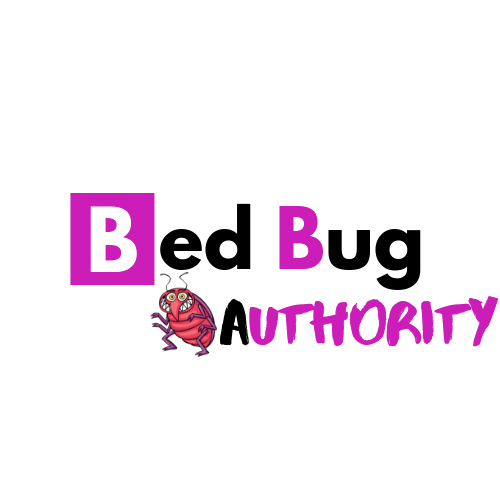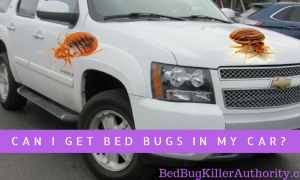It’s no surprise that with the amount of traveling we do nowadays, there is a good chance that you can encounter bed bugs and wishing we’d never set foot outside our homes. When it comes to these pests, which are the torment of many travelers and hoteliers alike. To be honest, travel isn’t the only way Bed Bugs can come into your home.
Bed bugs are difficult to get rid of once they infest a sleeping area or any other part of your home. If you’ve ever encountered them and suffered their incredibly itchy bites, you may have taken a DIY approach to handle the problem. You may have read that bagging your luggage, linens or clothing and leaving it in the hot sun is an effective do-it-yourself technique.
But how long will bed bugs live in a plastic bag?
The answer to that question is not so cut and dry because it depends. Bed bugs can live for quite some time without a blood meal, so it’s really the prolonged exposure to heat that kills both live bed bugs and eggs. It’s important to understand how to manage a bed bug infestation or how to avoid one in the first place.
Today, we’ll answer some common questions homeowners have about eradicating and preventing a bed bug infestation.
Can Bed Bugs Survive Outside?
The trouble with bed bugs is, if you’re a traveler, you and your luggage could come into contact with these insects in any number of places and not just in bed. In fact, bed bug infestations can occur in armchairs, bus or train seats, the trunks of taxis and more. How “nice” or expensive a hotel has little to do with its bed bug status. Even the fanciest hotels can be infested with bed bugs.
Bed Bugs are reviled across the world precisely because they are so hard to get rid of and because their bites are so irritating. They feed only on blood and only the blood of humans (although they will go after cats & dogs when we are not available), which makes us their top target for survival. Most people who are bitten by bed bugs will have at least a mild allergic reaction, resulting in small, red, raised welts that may blister and are incredibly itchy.
Bed bug bites are similar to the bites of some outdoor critters, such as chiggers, which are tiny, reddish-orange mites that live outside in the grass. If you’ve ever spent a day in the yard or at the park and then found yourself covered in intensely itchy red welts and especially if those welts were clustered around areas where your clothing was tight on your body, such as the tops of your socks or around the elastic bands of your shorts or undergarments it’s likely that you had an encounter not with bed bugs, but with chiggers.
Bed bugs stay mostly indoors because we stay mostly indoors. That does not mean, however, that bed bugs have never been known to make a home outside. Again, their primary motivator in choosing a place to live is access to food that is, humans. Unfortunately, it is not unheard of for bed bugs to infest outdoor areas like campsites, where humans spend lots of time. If you go camping, be sure to take precautions to protect yourself and your belongings from bed bugs, along with any other critters or wild animals that might pose a threat.
At What Temperature Do Bed Bugs Die?
Bed bugs are hearty creatures. They can live in temperatures up to about 113 degrees Fahrenheit. Higher than that, live bed bugs, larvae and eggs perish. That’s why many homeowners who are faced with an infestation put all their textiles into plastic bags and leave them out in the sun or put items into the clothes dryer on the hottest setting to eliminate these pesky creatures.
If you can’t take the heat, you can also try cold temperatures to treat bed bug-infested materials. To make sure eggs and live bugs don’t survive, you’ll need to place an item in a bag in a freezer that is at zero degrees Fahrenheit for three and a half days, or for 48 hours in a freezer with a temperature of -20 degrees Celsius (-4 degrees Fahrenheit.
One of the reasons that heat is often the treatment method of choice for bed bug exterminators is that it’s easier to pump hot air into your home than to introduce very cold air. In addition, if you are trying to control bed bugs on your own, you’ll need a lot of room in your freezer to treat all the potentially infested items.
What about your furniture? Whole house treatments can often be the most effective way to reach all the Bed Bugs stages, wherever they might be hiding in your home.
Knowing now under what temperatures and conditions bed bugs will die, let’s see how to tell if you’ve been bitten by bed bugs or, worse if you have an actual bed bug infestation. Bed bugs typically feed in the darkness of night, while their human hosts are asleep and essentially defenseless. This is why they’re called “bed bugs.” It’s not that they particularly prefer beds as their homes; beds are simply the place where humans can be found for a nice stretch of hours, every single day, and usually in darkness. These are the perfect conditions for a colony of bed bugs to feed to their hearts’ content.
Where do bed bugs hide on your body? During the light of day, while most people are awake and away from their beds, bed bugs actually hide in cracks, crevices and other dark, difficult-to-see spots, which makes them hard to find unless you know what to look for.
Here are some signs that point to the presence of bed bugs in your bed or any other area of your home:
- Spotting an actual bed bug, whether it’s alive or dead; can include shedding exoskeletons. Look for a small, brown insect with an oval-shaped body, six legs and a pair of tiny antennae. Adult bed bugs grow to only about 4 or 5 mm. long and their bodies are very flat slender enough to fit easily into a crack between the baseboard and the wall, for example. Newborn bed bug nymphs are tiny and white, and only as big as the head of a pin. Needless to say, these are quite difficult to spot, especially against a white or pale-colored mattress.
- Tiny black spots about the size of poppy seeds, which could be bed bug excrement. Bed bug droppings sometimes bleed onto the mattress or sheets, just as an ink spot from a marker would spread.
- Dark red, brown or rust-colored spots on a mattress or pillow. These discolorations could be spots of dried blood that resulted from a bed bug being crushed.
- Clusters or lines of intensely itchy bites on your skin. Bed bug bites are likely to develop into small red welts or even blisters, and multiple bites will often show up in lines on your skin since bed bugs have the habit of taking a bite, moving a millimeter or two away to take another bite, and so on.
Anytime you’re on vacation and you spot any of the above signs in your hotel room, what should you do? It is true that high temperatures can kill off bed bugs; this is why one of the most effective treatments for a bed bug infestation, as we’ve already mentioned, is a whole-house heat remediation treatment. This method is based on simple, proven scientific principles regarding the best way to kill off bed bugs at every stage of life, from eggs to adults.
If travelers find bed bugs in a hotel room or any other area, they can’t expect to rely on whole-room heat treatment for protection. One thing you can do is to wash all your clothes (and your luggage too, if possible) and then dry them on your dryer’s hottest setting. Another way to create the same effect as a clothes dryer, as we covered earlier, is to place your clothing and suitcase inside a plastic garbage bag, seal off the bag and set it outside in the sun or inside a hot car for a day or two. This method works best, of course, if it’s summertime and the sun is out! Some studies have found this method to be ineffective, however, so your results may vary.
Perhaps you find an effective way to make sure your clothing and luggage are bedbug-free, but how should you deal with bed bugs moving into your home later on? What if you unknowingly bring along a few unwanted insect hitchhikers, despite your best efforts and intentions?
How Long Can Bed Bugs Live In An Empty House?
Bed bugs often live for about a year, which is unfortunate for us, since they don’t die off very quickly on their own. Bed Bugs have actually been known to live for about the same time period without food, given the right temperature and humidity conditions—which means bed bugs can even live in an empty house for quite some time before dying due to lack of food.
Obviously, this is a potential issue for homebuyers who have, knowingly or unknowingly, purchased a house that had a bed bug infestation. It’s also an issue for tenants moving into a vacant house or apartment; even if the space is clean, it could be hosting live, hungry bed bugs.
For these reasons, it’s very important not just for travelers to inspect their hotel rooms for bed bugs, but also for homeowners and renters to inspect any home or apartment they are considering moving into. To be on the safe side, request to personally conduct an in-depth inspection if you’re concerned about the presence of bed bugs.
Remember, homeowners with an infestation cannot just move out for a weekend and expect to return to a bedbug-free home. This is one of the many DIY approaches that are simply not effective.
How Long Can Baby Bed Bugs Live Without Feeding?
Adult bed bugs can live up to half a year without feeding on human blood if the ambient temperature and humidity conditions are right. When going without feedings, bed bugs are more likely to survive in a room or area that is cool but not too cold, and not too dry.
Baby bed bugs, aka bed bug nymphs, which are newly hatched eggs can survive for quite some time without feeding. Bed bug nymphs actually go through five life cycle stages before hatching into full-fledged adult bed bugs, and each stage of nymph requires a blood-feeding before it can hatch into the next-larger stage. The older a bed bug nymph is, the longer it can live without a blood meal; while newly hatched nymphs can survive for several weeks or even months without a meal, older nymphs can survive even longer. Some studies have shown that later-stage bed bug nymphs can survive for over a year without a blood meal.
Preventing Bed Bugs
As with so many issues homeowners (and travelers) can face, preventing a problem is far easier than treating one after it develops, and this is certainly true of bed bug infestations. To avoid a nasty bed bug encounter while traveling, your best bet is to inspect everything your hotel room’s walls, carpet and furniture and your luggage—both when you’re traveling and when you return home again.
Savvy travelers will carry a small flashlight with them when traveling. Use the light to inspect your bed and other furniture when checking into a hotel. Here’s how to check for bed bugs:
- Pull the bedding back at the head and the foot of the bed and use your light to search for any evidence of bed bugs: bug bodies, feces or telltale spots of blood.
- Inspect the seams of the mattress and all-around any tags that may be attached to it.
- Check behind the headboard, as bed bugs sometimes hide in the dark spaces behind furniture or on the wall.
- Check your pillows as well, beneath their pillowcases.
- Inspect any furniture in the room, in the same manner, making sure to look between couch cushions, in the crevices between the arm and seat of a recliner and so on.
- If possible, place your luggage on the luggage rack rather than directly on the carpet or furniture, and be sure to pull the rack away from the wall so your luggage is as free-standing as possible.
- Don’t unpack your bags and place clothing in drawers; instead, use your suitcase as a dresser, or hang clothing in the closet—but only after checking the closet thoroughly for evidence of bed bugs.
When you return home, inspect your luggage and its contents very thoroughly before you bring it inside your house. If you must bring it inside without inspecting it, do the inspection inside someplace well-lit and on a hard, light-colored surface, such as on white paper spread out over your kitchen table or laundry room floor. Use a flashlight, and be sure to check in the cracks between seams and around any piping on your suitcase.
The sad truth is that bed bug infestations can be extremely difficult to manage on your own. Some homeowners hope that a combination of bed bugs and dryer sheets will be deadly, while others mistakenly believe that bright light will keep bed bugs away.
Eradicate Your Bed Bugs
If you see any evidence of bed bugs, it’s best to take a proactive approach by treating it as a potential infestation. Treating bed bugs on your own is a time-consuming, difficult process but that’s why you have to catch it at their early stages. We can recommend that the best method to eliminate bed bugs from your home, is at the early stages of their life cycle.











